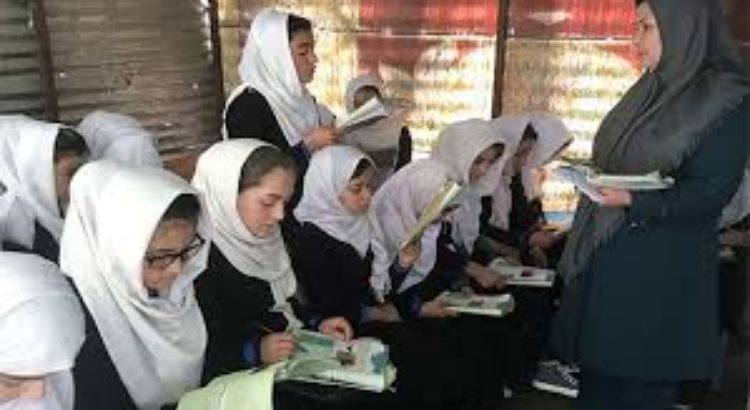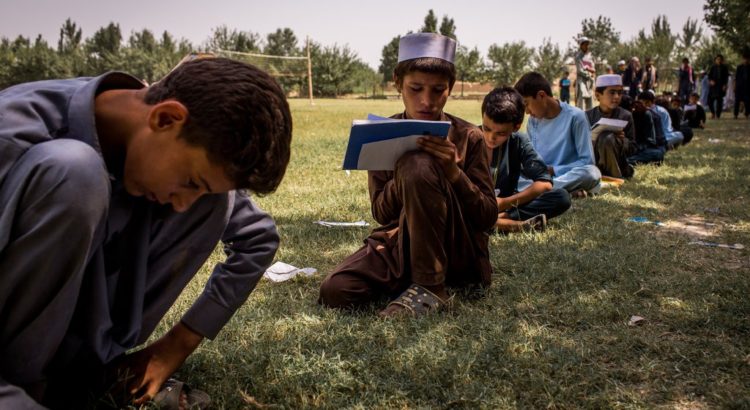By reliefweb
Education has been at the forefront of the political battles and conflicts that have plagued Afghanistan over the past few decades.
Changing political ideologies have taken a toll on all students as the entire Afghan education system including its staff, buildings, curricula, and attendance, was wiped out.
The current Afghan government has made service delivery a priority to promote social cohesion and trust in public institutions and pave the way for growth and jobs.
But despite these efforts, Afghanistan has been experiencing increased fragility.
The report Afghanistan: Promoting Education During Times of Increased Fragility provides an up-to-date analysis of the Afghan education sector, including the use of public money spanning over a period of six years.
Further to that, The report offers new insights on the performance of the education system and recommends reforms to improve learning outcomes and maximize public expenditures.
Key Findings
- Afghanistan has made great strides in improving access and enrollment in primary schools, but access outcomes are not equitable. In 2016, out of a population of 34.66 million, more than 9.2 million Afghan youths and children were enrolled in school, representing a 9-fold growth since 2001. But provincial analysis shows a high proportion of out-of-school children, including girls exceeding 50 percent in 15 of the 34 provinces. Rural children and youth are 10 percent more likely to be out of school compared to the national average.
- There is also a big gap between enrollment and attendance, witnessed by the fact that nearly half of enrolled students do not show up regularly at school. In Afghanistan, schools typically keep a student on the enrollment rolls for three years after the student stops attending. These are called “permanently absent” students and these numbers have implications for calculating unit costs per student as they are calculated based on official enrollment figures.
- In addition to considerable access challenges, the education system in Afghanistan is facing a learning crisis. Many young Afghans do not know how to read and write. Only half of the population between the ages of 15 and 24 is literate. Other factors contributing to low learning outcomes and thus the learning crisis include the low qualification of teachers and inadequate learning environment, with the teacher force remaining generally underqualified.
- Education spending in Afghanistan has reduced over the past five years; only considerable donor financing has kept the sector afloat to deliver basic services.However, substantial resources are needed to prepare for the increase in students attending secondary education. Despite enrollment growth, education spending in Afghanistan has declined over time as a proportion of the government budget. During the period of 2010-2015, thanks to the growing economy, the total government budget tripled, but this growth did not translate into a larger share of the budget being allocated for education.
- Although Afghanistan’s average education spending is higher than education expenditures in comparable countries, due to the lack of or inefficient use of resources, the country’s current spending trajectory is not sufficient to support expected enrollment growth, particularly in lower and upper secondary education. There are significant challenges that the country must overcome to ensure that funding is maintained at an adequate level. Without new resources or improvements in the efficient and effective use of available resources, the current system would not be able to support (expected) student growth.
- Unit cost analysis, on its surface, does not suggest that there is significant waste at any particular subsector. However, it is important to remember that there is a significant gap between attendance and enrollment rates. Adjusting this unit cost using attendance rates instead of enrollment rates, Afghanistan spends about 25 percent of per capita gross domestic product (GDP). This is higher than most low-income countries for which data exist. Higher education unit costs are closer to the low-income country averages: 141 percent of per capita income in Afghanistan compared to 125 percent across low-income countries. Other sources of inefficiency include low budget execution, especially in capital projects, high overhead spending and thus few resources for learning materials.
- The benefit incidence analysis shows that public spending across all education levels, from primary school to higher education, benefits more children from higher income quintiles.Among primary school students, children from the highest income quintile constitute one-fourth of all students while students from the lowest income quintile account for only 15 percent. The bottom two income quintiles combined represent 26 percent of students at the lower secondary level (compared to the top quintile students that account for nearly a third of all students). At the upper secondary level, the bottom two quintiles can claim only a fifth of the students, and at the university level, only 12 percent. More than half the students who attend university are from the higher income quintile in the country.
Recommendations
- To improve the performance and equity of the education sector, Afghanistan must reform the sector policies and funding priorities. Afghanistan should target investments towards improving equity. Given that poor learning conditions are linked to repetition, attrition and dropping out, Afghanistan must invest in improving the quality of education by increasing spending on teaching and learning materials.
- Expand/stabilize access and attendance through community-based education, especially in rural and conflict-affected areas where school attendance comes at a considerable risk.However, given the variety of approaches and costs, designing a harmonized and cost-effective package of services should be a priority.
- Develop a long-term needs projection for the education budget.Afghanistan must focus on developing multi-year budget projections adjusted for the current and future needs of the education system. As the pressure for expanding school infrastructure at the national level slows down over time with the eventual reduction in the school-age population, long-term budgeting should consider an increasing need for school repairs and maintenance as well as much needed school materials and supplies.
- Make better use of the existing budget structure and the information systems for more transparency on allocation and use of public resources.Analyses of education sector performance and its financing point to the necessity to strengthen the comprehensiveness of data provided through the multiple management information systems. Institute integrated information management systems for better monitoring and reporting on outcomes and evaluation.
Source of the review: https://reliefweb.int/report/afghanistan/afghanistan-promoting-education-during-times-increased-fragility









 Users Today : 28
Users Today : 28 Total Users : 35460159
Total Users : 35460159 Views Today : 42
Views Today : 42 Total views : 3418825
Total views : 3418825